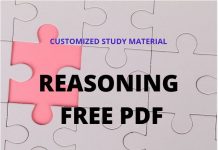 For Daily Job Alert For Daily Job Alert |
Join Our Whats App Channel |
 For Free Study Material For Free Study Material |
Join Our Telegram Channel |
World History Basic Quiz – Free Pdf Download
World History for UPSC | SSC | Banking | Railway | State PCS :- Hello Aspirants as we know that all of you are preparing for various government & private exams in which World History plays vital role and many questions are asked in GS/GK/GA section from this topic. World History Questions will help you understand this topic in better way.
The World History quiz is provided with detailed solution so that you will have better idea about the World History. You can Download the Free PDF of “World History Question & Answers” from above button.
So, we are providing you Previous Year Questions of World History that are asked in UPSC | SSC | RBI | NABARD | Banking | Railway | State PCS exams. Please attempt the World History Quiz and in comment section please reply your views regarding this quiz & also tell us about which topics quizzes you want. Don’t Forget to share this “Free Quiz on World History” among your friends. Keep Learning.
For Best Handwritten Notes for All Subjects Join Our Telegram Channel >> Click Here
1.When did China start the Civil Services
Examinations ?
(1) 6 A.D (2) 1905
(3) 1920 (4) 1949
[toggle title=”Answer” state=”close”](1) One of the oldest examples of a civil service based
on meritocracy is the Imperial bureaucracy of China,
which can be traced as far back as the Qin Dynasty
(221–207 BC). During the Han Dynasty (202 BC–220
AD) the xiaolian system of recommendation by
superiors for appointments to office was established.
The civil service recruitment method and educational
system employed from the Han dynasty (206 B.C.–
A.D. 220) was abolished by the Ch’ing dowager
empress Tz’u Hsi in 1905 under pressure from leading
Chinese intellectuals. The Sui dynasty (581–618)
adopted this Han system and applied it in a much
more systematic way as a method of official
recruitment.[/toggle]
2.Who was the first Calipha
(1) Sulaiman, the Great
(2) Abu Bakr
(3) Iman Hussain
(4) Constantine
[toggle title=”Answer” state=”close”](2) Abu Bakr was a senior companion (Sahabi) and
the father-in-law of the Islamic prophet Muhammad.
He ruled over the Rashidun Caliphate from 632–634
CE when he became the first Muslim Caliph following
Muhammad’s death. As Caliph, Abu Bakr succeeded
to the political and administrative functions previously
exercised by Muhammad, since the religious function
and authority of prophethood ended with Muhammad’s
death according to Islam. He was called Al-Siddiq (The
Truthful).[/toggle]
3.In which country is Karabla, the
holy city of Shia Muslims
located ?
(1) Iran (2) Iraq
(3) Jordan (4) Syria
[toggle title=”Answer” state=”close”](2) Karbala is a city in Iraq, southwest of Baghdad.
The city, best known as the location of the Battle of
Karbala (680), is amongst the holiest cities for Shia
Muslims after Mecca and Medina. It is home to the
Imam Hussein Shrine. Karbala is famous as the site
of the martyrdom of Hussein ibn Ali (Imam Hussein),
and commemorations are held by millions of Shias
annually to remember it. Karbala is considered sacred
by all Shias.[/toggle]
4.The city of “Tashkent” is located in
(1) Uzbekistan (2) Kazakhstan
(3) Russia (4) Kyrgystan
[toggle title=”Answer” state=”close”](1) Tashkent is the capital of Uzbekistan and of the
Tashkent Province. This historic city is associated
with the Tashkent Declaration of 10 January, 1966
which was a peace agreement between India and
Pakistan after the Indo-Pakistani War of 1965. The
Soviets, represented by Premier Alexei Kosygin
moderated between Indian Prime Minister Lal Bahadur
Shastri and Pakistani President Muhammad Ayub
Khan. The Tashkent conference, under UN, American
and Russian pressure, compelled Pakistan and India
to restore their national boundary and the 1949
ceasefire line in Kashmir. This eventually led to
dissatisfaction and protests against the Ayub Khan
leadership.[/toggle]
5.Independence movement of Vietnam
was headed by
(1) Ngo Dinh Diem
(2) Zhou Enlai
(3) Pol Pot
(4) Ho Chi Minh
[toggle title=”Answer” state=”close”](4) Ho Chi Minh was a Vietnamese Communist dictator
who was prime minister (1945–1955) and president
(1945–1969) of the Democratic Republic of Vietnam
(North Vietnam). He was a key figure in the foundation
of the Democratic Republic of Vietnam in 1945, as
well as the People’s Army of Vietnam (PAVN) and the
Viet Cong (NLF or VC) during the Vietnam War. He
led the Viet Minh independence movement from 1941 onward, establishing the communist-ruled Democratic
Republic of Vietnam in 1945 and defeating the French
Union in 1954 at battle of Dien Bien Phu.[/toggle]
6.Which one country is still governed
by a monarch ?
(1) Afghanistan
(2) Iran
(3) Iraq
(4) Saudi Arabia
[toggle title=”Answer” state=”close”](4) Saudi Arabia, officially known as the Kingdom of
Saudi Arabia, is an absolute monarchy, although,
according to the Basic Law of Saudi Arabia adopted
by royal decree in 1992, the king must comply with
Sharia (that is, Islamic law) and the Quran. The Quran
and the Sunnah (the traditions of Muhammad) are
declared to be the country’s constitution, but no written
modern constitution has ever been written for Saudi
Arabia, and Saudi Arabia remains the only Arab Nation
where no national elections have ever taken place,
since its creation. No political parties or national
elections are permitted.[/toggle]
7.Japan’s Parliament is known as
(1) Diet (2) Dail
(3) Yuan (4) Shora
[toggle title=”Answer” state=”close”](1) The Diet is Japan’s bicameral legislature. It is
composed of a lower house, called the House of
Representatives, and an upper house, called the House
of Councillors. Both houses of the Diet are directly
elected under a parallel voting system. In addition to
passing laws, the Diet is formally responsible for
selecting the Prime Minister. The Diet was first
convened as the Imperial Diet in 1889 as a result of
adopting the Meiji constitution. The Diet took its
current form in 1947 upon the adoption of the postwar
constitution and is considered by the Constitution to
be the highest organ of state power.[/toggle]
8.The currency of Thailand is
(1) Bhat (2) Rupiah
(3) Yuan (4) Yen
[toggle title=”Answer” state=”close”](1) Baht is the currency of Thailand. It is subdivided
into 100 satang. The issuance of currency is the
responsibility of the Bank of Thailand.[/toggle]
9.1911 Revolution of China resulted
in
(1) Establishment of a Republic
(2) Reudalism
(3) Democracy
(4) Increased problems of people
[toggle title=”Answer” state=”close”](1) The Xinhai Revolution, also known as the
Revolution of 1911 or the Chinese Revolution,
overthrew China’s last imperial dynasty, the Qing
Dynasty, and established the Republic of China. The
revolution was named Xinhai because it occurred in
1911, the year of the Xinhai stem-branch in the
sexagenary cycle of the Chinese calendar. January 1,
1912, was set as the first day of the First Year of the
Republic of China.[/toggle]
10.East Timor, in Indonesian Archipelago,
was the former colony of
(1) Dutch (2) English
(3) French (4) Portuguese
[toggle title=”Answer” state=”close”](4) East Timor was colonized by Portugal in the 16th
century, and was known as Portuguese Timor until
Portugal’s decolonization of the country. In late 1975,
East Timor declared its independence, but later that
year was invaded and occupied by Indonesia and was
declared Indonesia’s 27th province the following year.
In 1999, following the United Nations-sponsored act
of self-determination, Indonesia relinquished control
of the territory and East Timor became the first new
sovereign state of the 21st century on May 20, 2002.[/toggle]












